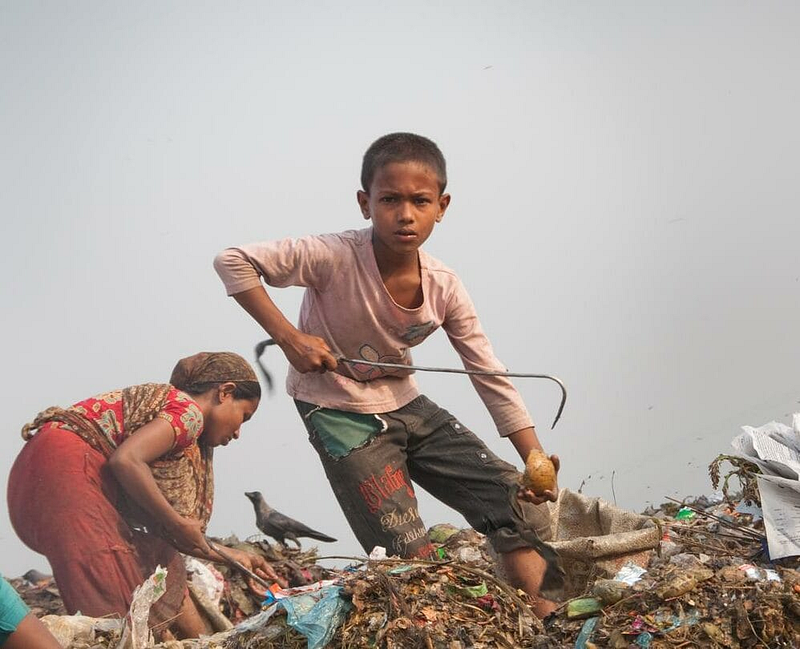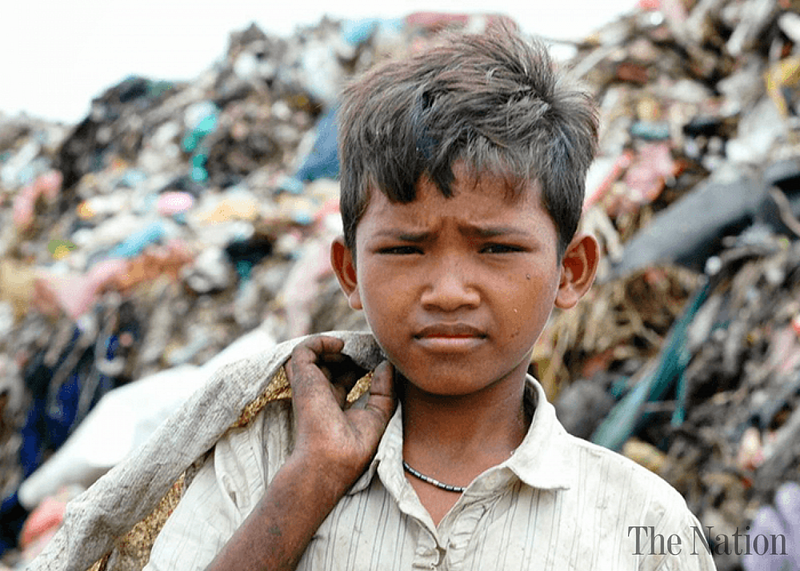A Stolen Childhood: Child Labour
To begin, let’s contemplate on the question: How did you spend your childhood? I’m sure many of us would say we had a childhood where we…

To begin, let’s contemplate on the question: How did you spend your childhood? I’m sure many of us would say we had a childhood where we weren’t responsible for getting bills paid and we knew we would always be welcomed by warm meals on the dining table. However, the same can’t be said for the over 160 million young children who are not given the privilege to live the same childhood that most children would typically have. Troubled by the economic burdens forced onto them at a young age, many have unknowingly fallen into the trap of economic exploitation as they desperately seek for work. Child labour has compromised significant aspects of growing up for these children, such as education and this has not only restricted their rights but has limited various potential future opportunities as well. With the issue of child labour being turned a blind eye time and time again, it’s seemingly impossible to see an end to this vicous cycle of poverty and exploitation.
No child voluntarily enters the labour market. Many of those suffering from poverty, are often left with no choice but to rely on child labor in order to improve their chances of attaining the bare necessities of life. It’s sad to say, but extreme poverty has made it an obligation for many families to put their children up for employment to earn money for a daily living and at times, even with these additional wages, getting by is still no easy task.
Employers are more than aware of how desperate these children are to earn a living. Children, as they are, are often naive and oblivious. Employers take advantage of this innocence through lies, bribing these children into the labour industry with the promise of earning decent wages for their hard work. For employers slipping these obedient workers under authority’s radar is a rather simple task. With the intricacy and complexity of the supply chain network, having child labour go undetected by oblivious corporations, can be effortlessly achieved.
When there is a demand, there must be a supply. Some may assume that, with the growth of economic demand for products such as garments or agriculture, corporations would increase their labour investments. However, this is not the case, rather, this rise in demand pushes corporations to find ways to lower labour costs even more so they can invest in other aspects they deem ‘more important’, such as splurging on contemporary technology or purchasing more supplies to boost the production process. With that, employers of various industries have sought after child labour to lower their costs.
This has been seen in industries such as cotton farming, where market demand for children is especially high as the small fingers of young children are able to pick cotton plants at an expeditious pace, whilst leaving minimal damage on the cotton buds. Many of these children are often compelled to work up to 12 hours a day in extreme climates. But, this sort of inhumane labour is not only found in the cotton industry, the production of fast fashion garments is also subjecting young girls to work with needles and threads for hours and hours on end. All this, just for them to return home with a mere few cents.
In 2006 alone, approximately 75 million children didn’t have access to proper schooling. With the access of educational resources being limited to the privileged and as child labour continues to barricade these children from accessing to schooling, this lack of knowledge has critically disadvantaged child labourers. To a child who may not know any better, $2 a day for up to 110 hours a week of work may seem like a jackpot. This absence of education in the lives of these children have prevented them from learning things significant to life, such as the value of money. With that, even data from the Institute of Labour Economics has sufficiently evinced that children, with access to quality schooling, are 8.3% less likely to participate in the labour market.

As universally widespread as child labour is, it is so often overlooked, to the extent that you may not notice it, even in your own country. In Malaysia, while having a stroll around the bustling city of Kuala Lumpur, it’s not out of the ordinary to pass by young children and their siblings begging for money along the five foot way or sidewalks paving the streets, many of them dressed in worned and ragged clothes, holding tattered plastic cups filled with coins and RM1 notes.
But, Malaysia doesn’t even compete with the top ranks. The top 3 nations of India, Bangladesh and Pakistan, have employed over 14.2 million child labourers, and to our horror that only accommodates for 9% of the universal child labour population.
Now, we may know what child labour is about and who are the victims targeted by employers. But do we really know what else goes on in this deep web of exploitation?
“There is no supervision or social control mechanisms, no unions that can help them to bargain for better working conditions. These are very low-skilled workers without a voice, so they are easy targets.”
— Sofie Ovaa, global campaign coordinator of Stop Child Labour
The arduous pressure of working at such a young age has left these children various physical and mental repercussions, with certain repercussions even resulting in the death of young lives.
Working in the industry often inflicts loneliness, seclusion and isolation, as a result, severe depression has been a circulating mental illness amongst children in the labour force. Experiencing depression at such a young age prevents children from developing healthy emotions as they grow older and causes them to find difficulty in expressing personal thoughts and feelings. However, not only do they face an abundance of mental health issues, but many experience numerous health repercussions as well. Studies have shown that children working in the manufacturing process are constantly at high risk of diseases such as respiratory illness as the exposure to toxic chemicals something daily to their routines. This increases risks of developing various health complications such as lung cancer, heart disease and other life-threatening conditions. Not only that but children in the labour market are also threatened with physical disabilities due to their intensive labour work. This can be seen in the fact that numerous children end up suffering from malnutrition due to working long hours of strenuous labour with minimal food intake, this has placed their physical health at stake, heightening risks of stunted growth, reduced muscle mass and decreased mobility.

Yet, the pressure of being utilised for their labour is not the only aspect damaging, tarnishing and breaking these children. As employers, customers and various members of the industry have also found ways to neglect the youths, bodies and gullible minds of these guileless kids.
Even with abuse within the child labour industry being exceptionally prevalent, these cases are often undedected by authorities, as countless incidents are swept under the rug or left to be disregarded.
Children in the industry face emotional abuse, practically on a daily basis. Conditions of the work environment and employers are constantly unable to meet the emotional needs of these children. Splintering them with constant threats and warnings if they are unable to meet work requirements or lashing them with wicked criticism for not producing quality work. Research from the child welfare information gateway, has verified that child labourers face more emotional neglect than physical and sexual abuse combined.
Often, child labour subject these children to physical abuse. Young children are frequently punished in the form of brutal beatings, whips, and assault for their inability to meet the satisfaction of their employers. Derived from the abuse, children face numerous repercussions, ranging from minimal bruising and fractured bones to death and long-term disabilities.
Aside from emotional and physical neglect, hundreds of young victims have also spoken out about the sexaul harassment and abuse they encounter in the workplace. Many have come forward with their experience of having been inappropriately touched or propositioned, by not only fellow staff members and employers but customers as well. An Indonesian boy working as a waste collector in Indonesia’s wastelands has even stated from his own account that “I feel ashamed when my friends ask me to open my pants and touch my private areas”.
Encountering such abuse on a daily basis definitely has the capability of impacting the brain structure of a child. Studies have proven that continuous abuse and neglect experienced as a young child for a long period of time can result in permanent changes to a young developing brain. The changes in the brain structure have been proven to be significant enough to potentially cause psychological and emotional issues in adulthood, such as learning deficits or suffering from multiple psychological disorders. Research conducted by Dr. Martin Teichar has also indicated that children who have encountered ceaseless abuse or neglect have a harder time controlling urges and making rational decisions due to the physical changes in their brain development, this could possibly contribute to a higher risk of these children turning to substance abuse in their later years.

Putting An End to Child Labour
Now that we’ve been made aware of the harm child labour poses on children, what can we do to prevent it?
1. Doing your part in spreading awareness
Social media provides us with a variety of opportunities, including, having the ability to freely post. With this privilege, we, as social media users, are capable of spreading awareness on the topic of child labour in the countless forms, like images, texts, videos and much more.
2. Being aware of your purchases
You can combat harmful child labour practices easily by taking notice of your purchases. Doing research on brands before purchasing products allows you to choose to support goods which are ethically sourced, ethically distributed and ethically made. If consumers like us begin to shop more consciously, corporations are bound to take notice and would eventually address supply chain practices.
3. Supporting Non-Government organisations
It may be difficult to directly do our part in preventing child labour, but we can contribute by showing our support to NGOs such as Save the Children. These organisations offer immediate aid to victims of child labour and work towards long term societal change through changes in policies. By donating or volunteering in non-government organisations you are playing your part in the process of eliminating child labour.
These few tips may seem small, but by doing our part, these measures to eradicate child labour, may save thousands or even millions of young children from the grips of this revolting economic exploitation. While government officials can only do their part in instituting policies, the ignorance our society has on the situation of child labour must also be attacked. Fighting child labour requires a hefty push and it is a necessity to make this a people’s issue.
[Written by: Stefanie Khor]

